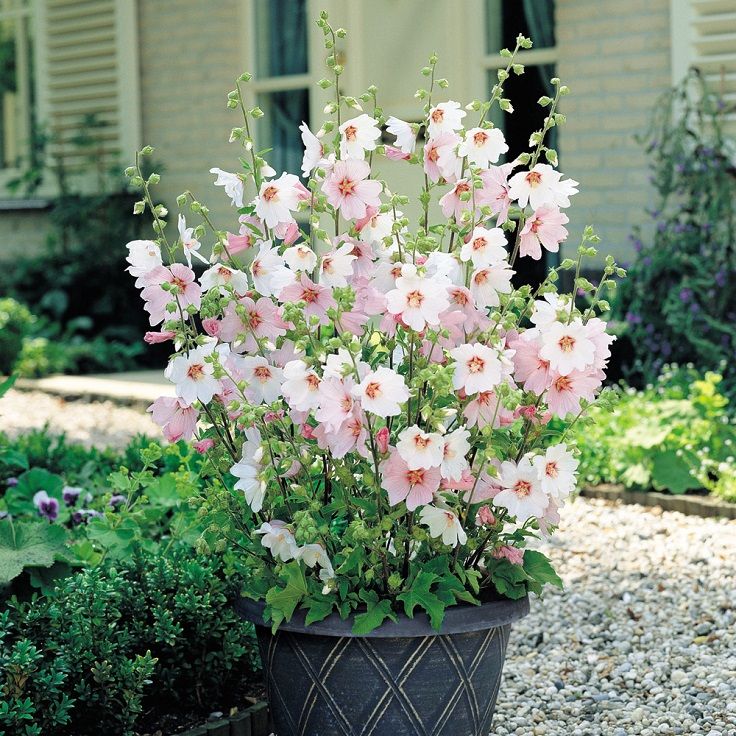Are you looking for landscape ideas for Arizona that can withstand the unique challenges and opportunities that come with the state’s climate? From choosing the right plants to effective irrigation strategies, creating shade, and incorporating native plants, there are many factors to consider when designing a beautiful and sustainable landscape in Arizona. This article will provide you with valuable tips and inspiration to create an outdoor space that thrives in the desert environment.
Landscaping in Arizona comes with its own set of challenges due to the arid climate and scorching heat. However, it also presents opportunities to embrace the natural beauty of the desert landscape and showcase a variety of drought-tolerant plants. By creatively using succulents and cacti, incorporating native plants, and implementing smart design ideas for shade and cooling areas, you can transform your outdoor space into a stunning oasis.
In this article, we will explore the best plant options for Arizona’s climate, creative ways to add texture and visual interest to your landscape using succulents and cacti, the benefits of incorporating native plants, effective irrigation strategies, hardscaping options using rocks and gravel, as well as maintenance tips to keep your Arizona landscape looking beautiful year-round.
Whether you’re a seasoned landscaper or a beginner looking for inspiration, these landscape ideas will help you create a stunning and sustainable outdoor space in Arizona.
Choosing the Right Plants
When selecting plants for an Arizona landscape, it’s important to consider their water needs and ability to tolerate high temperatures. Some popular choices for drought-tolerant plants in Arizona include agave, yucca, desert marigold, and lantana. These plants are not only able to survive with minimal water but also add vibrant colors and unique textures to your landscape design.
Succulents and cacti are also excellent options for an Arizona landscape. These types of plants are not only well-suited to the dry climate but also offer a visually striking aesthetic. By creatively incorporating succulents and cacti into your landscape design, you can add texture, height variations, and focal points that make your outdoor space truly stand out.
| Plant Type | Examples |
|---|---|
| Drought-Tolerant Plants | Agave, Yucca, Desert Marigold, Lantana |
| Succulents/Cacti | Aloe Vera, Barrel Cactus, Saguaro Cactus, Jade Plant |
Creative Use of Succulents and Cacti
Succulents and cacti are excellent choices for landscaping in Arizona due to their ability to thrive in the desert climate. These plants not only add visual interest and texture to your landscape but also require minimal maintenance, making them an ideal choice for busy homeowners. When incorporating succulents and cacti into your Arizona landscape, consider the following creative ideas:
- Create a succulent garden: Designate an area of your landscape to showcase a variety of colorful and unique succulent plants. Use decorative pots or planters to create a visually appealing display, and mix different types of succulents to add depth and dimension to the garden.
- Use cacti as focal points: Cacti come in a wide range of shapes and sizes, making them perfect for creating focal points in your landscape. Choose larger, more sculptural varieties to draw attention and add character to your outdoor space.
- Mix succulents with other plants: Combine drought-tolerant succulents with other low-water-use plants to create a diverse and eye-catching landscape. Consider adding ornamental grasses, yuccas, or agaves for a balanced and cohesive look.
Incorporating succulents and cacti into your Arizona landscape not only adds beauty but also helps conserve water and reduce maintenance needs, making them an eco-friendly choice for any outdoor space in the desert environment. By getting creative with these unique plants, you can achieve a stunning and sustainable landscape that thrives in the Arizona climate.
Incorporating Native Plants
Arizona’s unique climate and landscape offer some specific challenges and opportunities when it comes to landscaping. One of the key ways to create a visually stunning and sustainable landscape in Arizona is by incorporating native plants. These plants are naturally adapted to the local climate, which means they require less water and maintenance compared to non-native species. Additionally, using native plants can help highlight the natural beauty of Arizona in your own backyard.
One popular option for incorporating native plants in an Arizona landscape is using desert trees such as mesquite, palo verde, and ironwood. These trees not only provide shade and visual interest but also have beautiful spring blooms that add color to your landscape.
Another way to showcase Arizona’s natural beauty is by using vibrant wildflowers such as Mexican gold poppies, brittlebush, or desert marigold. These colorful plants can thrive in the dry conditions of Arizona and bring a burst of color to your outdoor space.
When incorporating native plants into your Arizona landscape, it’s essential to consider their water needs and growing conditions. Some native plants may require well-draining soil, while others may be more tolerant of heavy clay soils commonly found in Arizona. By carefully selecting and arranging native plants according to their needs, you can create a visually appealing landscape that celebrates the natural beauty of Arizona while requiring minimal maintenance.
| Native Plant | Description |
|---|---|
| Mesquite | A drought-tolerant tree with attractive yellow flowers |
| Mexican Gold Poppies | Vibrant wildflowers that add a burst of color to dry landscapes |
| Ironwood | An evergreen tree with beautiful purple blossoms |
Effective Irrigation Strategies
Arizona’s desert environment presents unique challenges when it comes to keeping a landscape lush and vibrant. Effective irrigation strategies are essential for maintaining a beautiful outdoor space while conserving water in this arid climate.
One of the most important considerations for landscaping in Arizona is to choose plants that are drought-tolerant and able to withstand the intense heat. By selecting the right plants and implementing smart irrigation techniques, it is possible to create a stunning landscape that thrives in the desert.
One of the key landscape ideas for Arizona is the use of drip irrigation systems. These systems deliver water directly to the base of plants, which minimizes evaporation and ensures that water reaches the roots where it is needed most. This method not only conserves water but also helps prevent fungal diseases that can occur with traditional overhead watering methods. Additionally, incorporating mulch around plants can help retain moisture in the soil, reducing the need for frequent watering.
Another effective irrigation strategy for Arizona landscapes is to group plants with similar watering needs together. This allows for more efficient watering practices, as you can tailor your irrigation schedule to meet the specific requirements of each plant grouping. By understanding the water needs of different plant species and strategically planning your irrigation system, you can maintain a lush and thriving landscape while minimizing water usage.
Incorporating these effective irrigation strategies into your Arizona landscape not only promotes sustainability but also helps conserve water in this precious desert environment. By choosing drought-tolerant plants, implementing efficient watering methods, and grouping plants with similar watering needs together, you can create a beautiful outdoor space that flourishes in Arizona’s challenging climate.
Creating Shade and Cooling Areas
Living in Arizona means dealing with high temperatures and intense heat for a significant portion of the year. However, with the right design and landscaping choices, it’s still possible to create comfortable and enjoyable outdoor spaces. Here are some smart design ideas for creating shade and cooling areas in the Arizona heat:
- Install a pergola or ramada: These structures provide essential shade and can be customized to fit your space and design preferences.
- Plant shade trees: Trees such as mesquite, palo verde, and desert willow can provide much-needed shade while adding beauty to your landscape.
- Incorporate misting systems: Misters can significantly lower the ambient temperature in outdoor areas, making them more comfortable during hot weather.
- Use umbrellas or shade sails: These portable options are great for providing temporary shade in different areas of your outdoor space.
In addition to these ideas, consider incorporating outdoor ceiling fans, strategically placing seating areas under existing structures like patio covers, or even setting up a small splash pool to cool off during the hottest months. By combining these elements with thoughtful plant choices and hardscaping features, you can make your outdoor living spaces enjoyable year-round despite the Arizona heat.
Hardscaping Options
When it comes to landscaping in Arizona, hardscaping options play a crucial role in creating a visually appealing and sustainable outdoor space. With the challenging climate and terrain, using rocks, gravel, and other materials can help enhance the overall aesthetic of your landscape while also providing practical benefits. Here are some ideas for incorporating hardscaping elements into your Arizona landscape.
Rock Gardens and Boulder Features
One popular hardscaping option for Arizona landscapes is the use of rock gardens and boulder features. By strategically placing large boulders and incorporating smaller rocks, you can add depth and texture to your outdoor space. Rock gardens also require minimal maintenance and can thrive in the desert environment, making them an ideal choice for many Arizona homeowners.
Xeriscaping With Gravel
Xeriscaping, or landscaping with water-efficient plants and materials, is a common practice in Arizona. Gravel is often used as a hardscaping element in xeriscape designs due to its low water requirements and ability to retain heat during cooler nights. Incorporating gravel pathways, mulch beds, or even decorative gravel areas can help reduce the need for traditional irrigation while adding visual interest to your landscape.
Fire Pits and Outdoor Seating Areas
Incorporating fire pits and outdoor seating areas made from stone or concrete pavers can create inviting spaces for outdoor entertaining and relaxation. These hardscaping features provide a focal point for the landscape while also serving a functional purpose. With proper design and placement, these areas can offer shade, comfort, and a place to gather during the warmer months in Arizona.
By embracing these hardscaping options along with suitable plant choices and effective irrigation strategies, you can create a stunning and sustainable landscape that thrives in the unique climate of Arizona. Whether you prefer a minimalist rock garden or an elaborate outdoor living space, there are numerous possibilities for enhancing your Arizona landscape with hardscaping elements.
Maintenance Tips
Maintaining a beautiful landscape in Arizona year-round requires special attention and care due to the extreme weather conditions and unique climate of the state. By following some maintenance tips, you can keep your Arizona landscape looking lush and vibrant no matter the season.
Proper Watering
One of the most important aspects of maintaining a beautiful Arizona landscape is implementing a proper watering schedule for your plants. With the dry and hot climate, it’s important to water your plants deeply but infrequently to encourage deep root growth and prevent water loss through evaporation. Consider investing in a drip irrigation system or soaker hoses to ensure efficient water distribution and minimize waste.
Regular Pruning
Regular pruning is essential for keeping your landscape looking tidy and promoting healthy plant growth, especially in an arid climate like Arizona’s. Prune away any dead or damaged branches, shape shrubs and trees as needed, and remove any invasive or overgrown plants to maintain a well-groomed appearance.
Weed Control
With the desert environment in Arizona, weeds can quickly take over your landscape if left unchecked. Implement a regular weeding schedule to keep unwanted plants from competing with your desired vegetation. Consider using mulch or gravel in plant beds to suppress weed growth while adding texture to your landscape.
By following these maintenance tips, you can ensure that your Arizona landscape remains beautiful and thriving throughout the year, showcasing drought-tolerant plants, native species, and creative hardscaping elements that embody the unique beauty of the state.
Conclusion
In conclusion, creating a stunning and sustainable landscape in Arizona is certainly not without its challenges, but with the right approach and knowledge, it’s absolutely achievable. By carefully choosing drought-tolerant plants, incorporating native flora, and utilizing creative hardscaping options, homeowners can craft a beautiful outdoor space that thrives in the unique climate of Arizona.
Effective irrigation strategies play a crucial role in maintaining the health and beauty of an Arizona landscape while conserving water. From drip irrigation systems to rainwater harvesting, there are a variety of methods available to keep your outdoor space lush while being mindful of water usage.
Additionally, smart design ideas such as creating shade and cooling areas can make outdoor spaces more enjoyable during the hot Arizona summers. With proper planning and maintenance tips, Arizona homeowners can cultivate a landscape that not only enhances the beauty of their property but also contributes to the overall sustainability of the environment. When it comes to landscape ideas for Arizona, thoughtful planning and creativity go a long way in transforming outdoor spaces into stunning and sustainable havens.
Frequently Asked Questions
How Do You Landscape in Arizona?
Landscaping in Arizona requires careful consideration of the hot and arid climate. Drought-resistant plants like cacti and succulents are great choices, along with native desert plants that can thrive in the intense sunlight and minimal water conditions. Hardscaping with rocks, gravel, and pavers can also add visual interest while minimizing water usage.
What Is the Landscape for Phoenix Arizona?
The landscape for Phoenix, Arizona is characterized by its desert environment, with sparse vegetation, rocky terrain, and a color palette of earthy tones. This landscape is often punctuated by cacti such as saguaro and prickly pear, as well as other hardy desert plants like agave and yucca.
Hardscaping features like stone pathways, gravel gardens, and rock formations are also common elements in Phoenix’s landscape design.
How Do You Landscape a Sloped Backyard on a Budget?
Landscaping a sloped backyard on a budget can be achieved through strategic placement of plants to prevent soil erosion and choosing low-maintenance ground covers to reduce the need for mowing or watering. Terracing or building retaining walls using affordable materials like railroad ties or concrete blocks can help create more usable space on a sloped yard while adding visual interest to the landscape.
Incorporating native plants that are well-adapted to the local climate can also minimize maintenance costs over time.

Welcome to my gardening blog! I am passionate about plants and enjoy sharing my knowledge and experiences with others. In this blog, I will write about everything related to gardening, from tips on how to get started to updates on my own garden projects.





